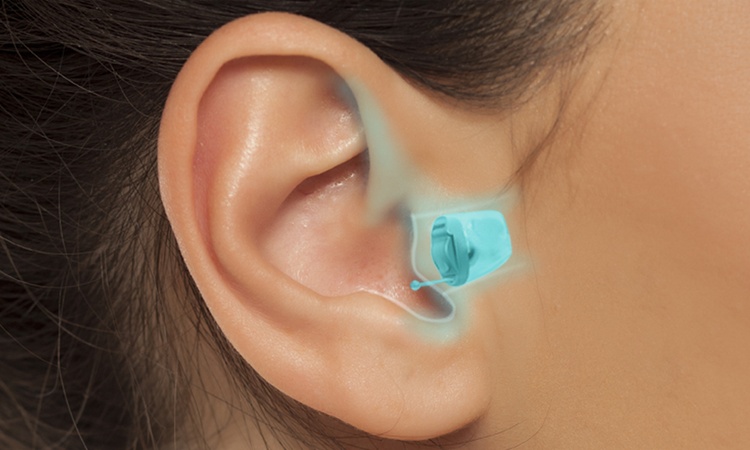New hearing aid technology: Making sound clear and natural again
What should I do if my hearing is gradually deteriorating? Modern hearing aid technology has broken through traditional limitations and provided new possibilities for hearing improvement. New hearing aids can restore natural sound quality, have a concealed and comfortable design, and personalized tuning can give you a better user experience.

How have hearing aids evolved in recent years?
Hearing aids have come a long way from the bulky, uncomfortable devices of the past. Modern hearing aids are sleek, discreet, and packed with advanced features. Digital signal processing has replaced analog technology, allowing for more precise sound amplification and noise reduction. Many of today’s hearing aids are equipped with artificial intelligence and machine learning capabilities, enabling them to adapt to different listening environments automatically. Additionally, wireless connectivity has become a standard feature, allowing users to stream audio directly from smartphones, TVs, and other devices.
What are the key features of modern hearing aid technology?
Today’s hearing aids offer a range of innovative features designed to enhance the user experience:
-
Directional microphones: These focus on sounds coming from specific directions, improving speech understanding in noisy environments.
-
Feedback cancellation: Advanced algorithms reduce or eliminate the annoying whistling sound often associated with older hearing aids.
-
Wind noise reduction: Special processing helps minimize the impact of wind noise, particularly beneficial for outdoor activities.
-
Rechargeable batteries: Many modern hearing aids now come with long-lasting rechargeable batteries, eliminating the need for frequent battery changes.
-
Smartphone connectivity: Users can adjust settings, stream audio, and even receive remote adjustments from their audiologists through smartphone apps.
How do new hearing aids improve sound clarity and naturalness?
The latest hearing aid technology aims to provide a more natural listening experience by preserving the nuances of sound. Advanced sound processing algorithms can distinguish between speech and background noise, prioritizing speech signals for better clarity. Some hearing aids now incorporate frequency lowering technology, which shifts high-frequency sounds that are difficult for some users to hear into a lower, more audible range.
Moreover, binaural processing allows hearing aids to work together, mimicking the way our ears naturally process sound. This technology helps users better localize sounds and understand speech in challenging listening situations.
What options are available for different types of hearing loss?
Hearing aid manufacturers now offer a wide range of devices to suit various types and degrees of hearing loss:
-
Behind-the-ear (BTE) aids: These sit behind the ear and are suitable for mild to profound hearing loss.
-
Receiver-in-canal (RIC) aids: Similar to BTEs but with a smaller profile, ideal for mild to severe hearing loss.
-
In-the-ear (ITE) aids: Custom-made to fit entirely within the ear, suitable for mild to severe hearing loss.
-
Completely-in-canal (CIC) aids: Nearly invisible, these fit deep inside the ear canal and are best for mild to moderate hearing loss.
-
Invisible-in-canal (IIC) aids: The smallest and most discreet option, suitable for mild to moderate hearing loss in adults.
What should I consider when choosing a hearing aid?
When selecting a hearing aid, several factors should be taken into account:
-
Degree and type of hearing loss
-
Lifestyle and daily activities
-
Cosmetic preferences
-
Budget
-
Technological features needed
-
Ease of use and maintenance
It’s essential to work closely with an audiologist or hearing care professional to determine the best option for your individual needs. They can conduct comprehensive hearing tests, recommend suitable devices, and provide proper fitting and programming.
Where can I find reputable hearing aid providers and services?
Finding the right hearing aid provider is crucial for ensuring optimal results. Here are some options for locating reputable providers and services in your area:
| Provider Type | Services Offered | Key Features/Benefits |
|---|---|---|
| Audiology Clinics | Comprehensive hearing tests, hearing aid fittings, ongoing care | Personalized service, expertise in various hearing aid brands |
| ENT Physician Offices | Medical evaluation, hearing tests, hearing aid recommendations | Combined medical and audiological expertise |
| Hearing Aid Retailers | Hearing tests, wide selection of hearing aids, fittings | Competitive pricing, multiple brand options |
| University Audiology Programs | Hearing tests, research-based care, hearing aid fittings | Access to cutting-edge technology, often at lower costs |
| VA Hospitals | Comprehensive hearing services for veterans | Specialized care for service-related hearing issues |
To find local providers, consider reaching out to your primary care physician for referrals, checking with your insurance provider for in-network options, or using online directories provided by professional organizations such as the American Academy of Audiology or the American Speech-Language-Hearing Association.
In conclusion, new hearing aid technology has made significant strides in improving sound clarity and naturalness for those with hearing loss. With a wide range of options available, from nearly invisible devices to those with advanced connectivity features, there’s likely a solution to meet your specific needs. By working with a qualified hearing care professional and taking advantage of these technological advancements, you can take an important step towards better hearing and an improved quality of life.
This article is for informational purposes only and should not be considered medical advice. Please consult a qualified healthcare professional for personalized guidance and treatment.




